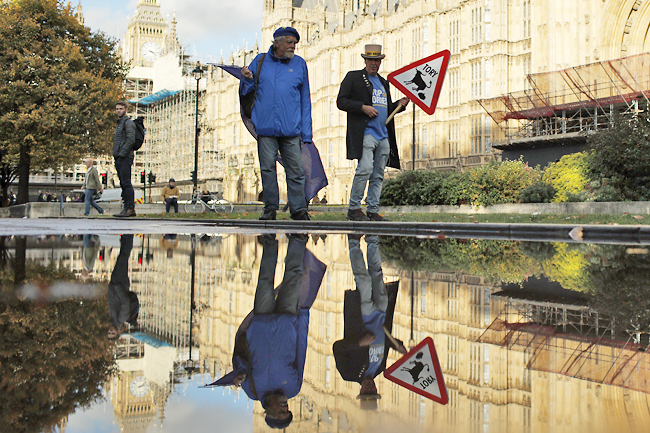LONDON (AP) – It is a British cliché that a week is a long time in politics. Liz Truss proved it true on Thursday when she became the shortest-serving British prime minister in history.
In a matter of days, her U-turn on economic plans that made global markets jittery and the resignations of key ministers prompted calls from within Truss’ party for her to step down.
But the shakeup at the top is hardly an outlier in the recent history of Britain’s Conservatives, whose latest troubles have been years in the making.
DAVID CAMERON’S DECISION
Some observers date the current leadership crisis to Conservative Party infighting over the role of the European Union (EU) during Cameron’s 2010-2016 tenure as Britain’s leader.
The pro-EU prime minister decided to resolve the debate by calling for a nationwide referendum on Britain’s membership in the bloc. With almost 52 per cent voting to leave and 48 per cent to remain, the 2016 referendum resulted in a divisive Brexit. It also led Cameron to resign.

MAY’S BREXIT MANDATE
Theresa May succeeded Cameron as Conservative leader and prime minister on a mandate to “deliver Brexit.”
She remained on the job for three years and 11 days, by which time the United Kingdom’s (UK) departure from the EU was still pending. The House of Commons rejected the withdrawal agreement May’s government negotiated with the EU three times.
It was a tumultuous time mired in frustration in Brussels and discord in Westminster.
Following a string of Brexit-related resignations from her government and under pressure from within her party, May ended up resigning.
BORIS JOHNSON’S TURN
In July 2019, leave campaigner Boris Johnson became Britain’s third prime minister in just over three years.
Johnson made Brexit finally happen in January 2020 after four years of international squabbling.
The emergence of the coronavirus pandemic weeks later threw the UK off course again.
Johnson was accused of moving too slowly to limit travel, create an effective test-and-trace programme and project vulnerable older people.
Though Johnson won praise for a swift rollout of a nationwide vaccination programme, the tight restrictions on businesses, public events and private gatherings the government ultimately imposed would lay the groundwork for the end of his tenure.
WHOSE PARTY IS THIS?
Photos and witness accounts emerged indicating Johnson and government officials broke their own COVID-19 rules on social gatherings during the pandemic.
In April of this year, Johnson received a fixed penalty notice for attending one such gathering. He was the first sitting UK prime minister to be punished for breaking the law.
The scandal, dubbed “party gate” by the British press, triggered a wave of disgust across Britain, especially among those who were not permitted to attend the funerals of loved ones who died during the pandemic.
Though Johnson survived a no-confidence vote over that, revelations in July that he appointed a deputy chief whip accused of misconduct led to a wave of ministerial resignations. It cost Johnson his job. He announced his resignation on July 7.
TRUSS MAKES HISTORY
Johnson ally and former foreign secretary Liz Truss swept past former Treasury chief Rishi Sunak in September to become Britain’s third female prime minister – and the last leader to meet with Queen Elizabeth II.
However, Truss is likely to be remembered for her brevity.
After resigning on Thursday, she holds the record as the shortest-serving leader in modern British history. Her demise was swift.






